
How a Hypnotic Scene From Sirens Puts Viewers Under Its Spell
The cinematographer of the dark-comedy series' second episode shares how strategically placed eyelines and a beamsplitter mirror helped align viewers with a character's entranced POV.
Way back in 2012, I was the cinematographer on the television series The Killing. I was lucky to meet director Nicole Kassell on that AMC/Netflix project and make three episodes that I’m very proud of. Nicole and I continued on Watchmen a few years later, and I cannot say enough about her qualities as a filmmaker and leader. So, when she approached me about a new limited series, Sirens — written by Molly Smith Metzler in a very unusual, dark and funny tone — our adventure to try to discover, and uncover, the right visual language to tell this story began.
Sirens is set on a coastal island, where Devon (Meghann Fahy) finds that her sister, Simone (Milly Alcock), is working as a live-in assistant to the wealthy and oddly alluring Michaela "Kiki" Kell (Julianne Moore). Like the sirens of classic Greek mythology, some of our characters possess the ability to bewitch others in their orbit. One particular aspect of the story — the moments in which one character casts a kind of "spell" on another — seemed to require something special and identifiable, to align the audience with the gaze our sirens.
In pursuit of this goal, we aimed to present a specific point of view, a sort of "Siren Vision," by placing the camera between both characters — the bewitcher and the bewitched. We strove to give the audience the experience of being examined or seduced by putting them in the characters' direct gaze. Think Hannibal Lecter and Clarice Starling, but only their one-on-one encounters — without the people-eating and drinking Chianti.
I attempted to make these intimate and slightly mesmerizing close-ups even more effective through the use of rear diopters; they are an option with the Arri Signature Primes. This allowed for changes in bokeh and the distortion of the edges of the frame, and more importantly, altered the character and roundness of people's faces, especially up close. They have four strengths, so I’d use the stronger ones for these shots.
Many scenes like this are short, with an actor playing to a camera in a fairly simple manner, with just a line or two. But in preparing to shoot our scene, we asked, "What if this was more extended — more complex?" A pivotal moment in Episode 2 ("Talons") presented an opportunity to test this approach. In the scene, Julianne’s character slips into Milly’s character's bed — quite an invasion of privacy — and proceeds to pry for some details on her personal history.
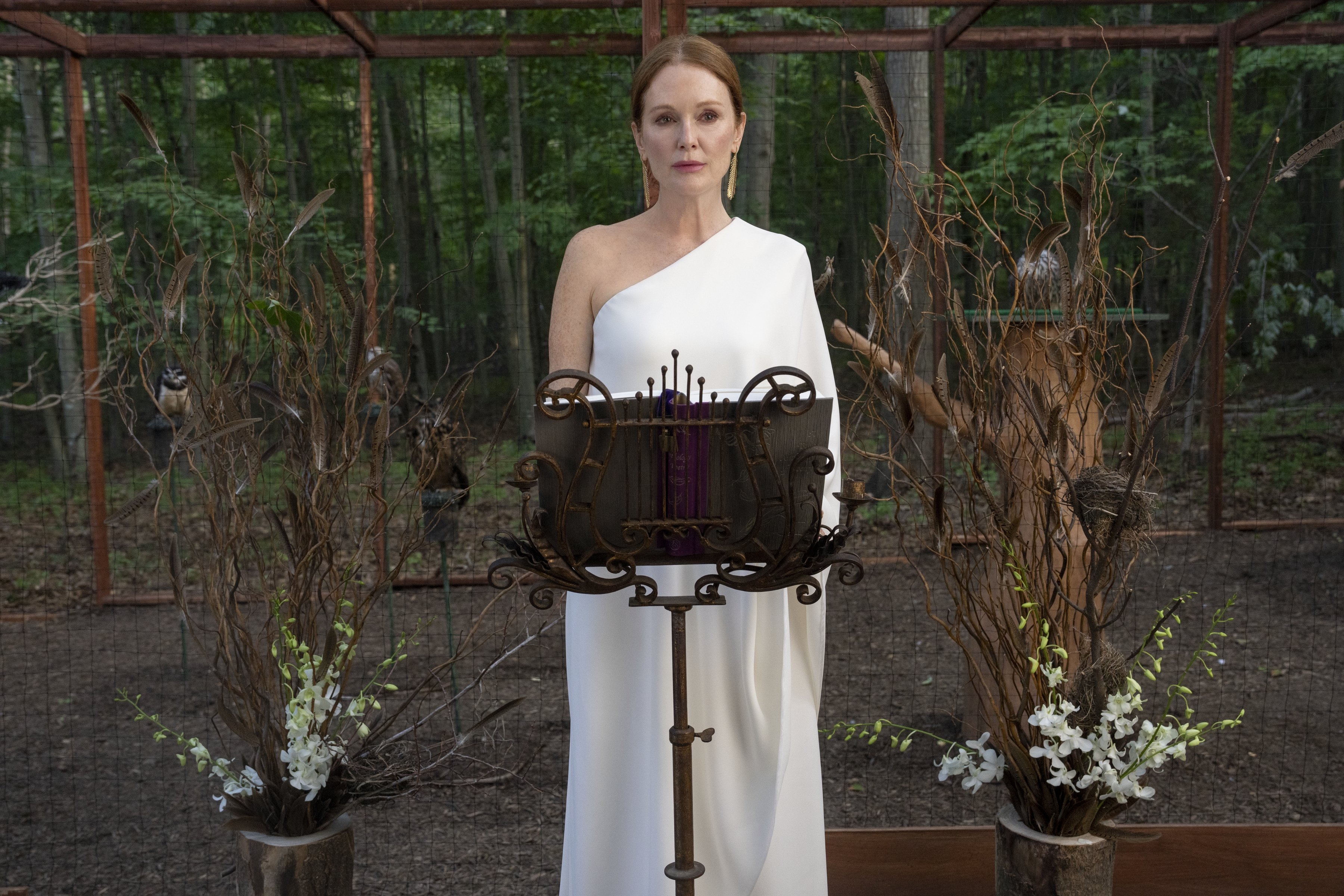
I wondered: Could we cross-cover this, conventionally, and find a way to accomplish our intimate first-person close-ups the same way?
Cross-coverage can be useful when filming scenes in which continuity is important, or when allowing for actors to improvise and overlap dialogue. It can also be expedient in terms of time. Of course, this approach comes with its own limits on angles, eyelines and lighting — yet, I have found myself suggesting coverage in this way more over time as I get more comfortable with the possible solutions.
I began thinking about the various ways we could use mirrors in this context. So, one great way to run ideas through is with your crew. I discussed this with our 1st AC, Eric Swanek, and we ran through a number of ideas: monitors, periscope-like designs with a few mirrors and beamsplitters. Then, Eric suggested that we could shoot both characters with the use of a single beamsplitter mirror, provided the cameras each lined up exactly with each reflection. Bingo.
I had used this effect in film school, to superimpose a ghostly illusion over a character... but never like this. For our scene in Episode 2, we would use a half-silvered mirror, through which half of the light passes and the other half is reflected. A light beam is split — say, 60 percent reflected and 40 percent transmitted.
If you have seen someone give a speech with a teleprompter, or have given one yourself, you'll know that what the speaker sees is the audience; you won't see the text of the speech reflected off of the glass from the screen below. What the audience sees through the glass is only you. Documentary filmmaker Errol Morris used this knowledge to develop his own on-camera interview technique, by placing the camera behind a beamsplitter. Errol's interview subject sees Errol's reflection, but the camera sees through the mirror to the subject. This creates the impression that his subject is speaking to the audience. (Editors' note: For more on the innovative device that Morris created to help place subjects' eyelines straight at the lens, read AC technical editor Jay Holben's installment of "Shot Craft" on shooting interviews.)
We first conducted an ergonomic test in the shape and size of the mirror required, so I could buy the right sized beamsplitter. I did a test with two camera bodies on their sides, getting them close together and finding the right lens — filters, optics, everything — in the right size, with a piece of glass in place of a beamsplitter. We could then see if the physicality of this setup would work, and how much space it would require. I also knew we would have to do this on the same day we shot the rest of the scene, which was in the bedroom set. The stage was very crowded; there wasn't a separate place to do it. I'd have to set it up somewhere on the side.
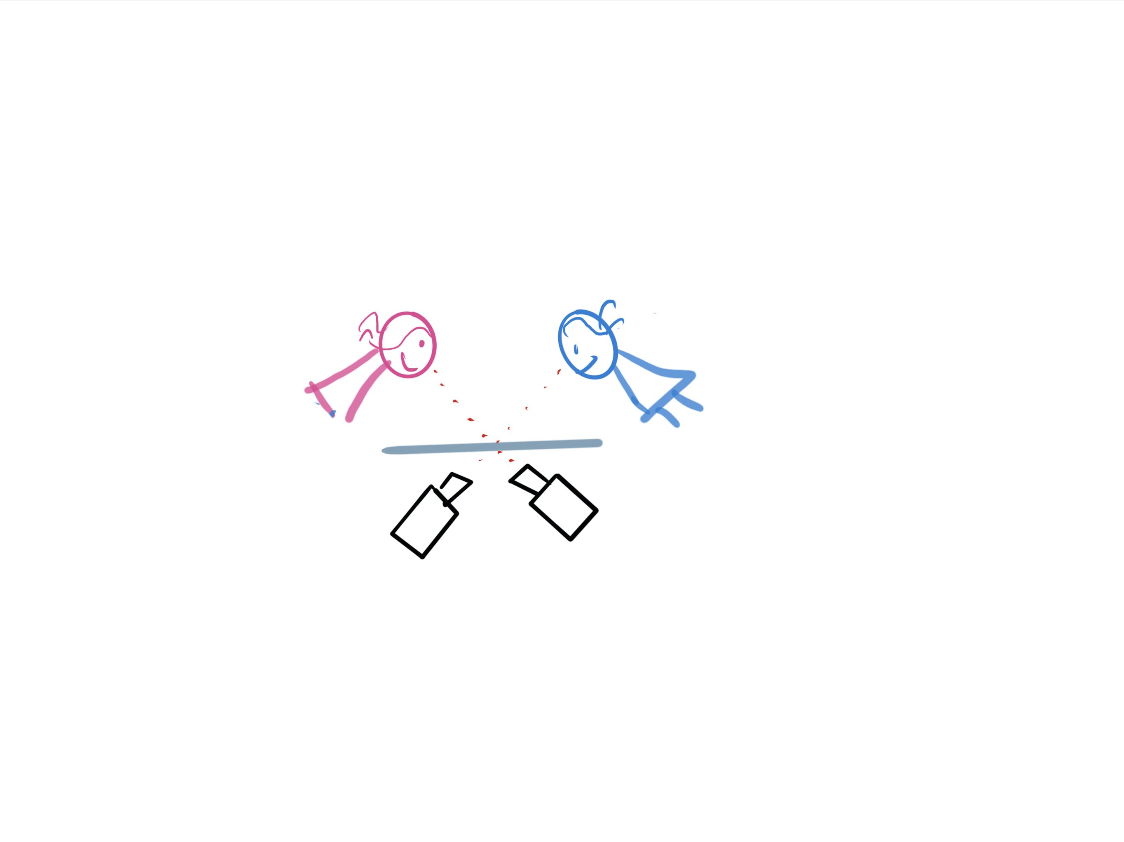

The trick was that the cameras had to be lined up to the same point on the mirror, so when the actors look at that same point, they're looking at each other while also looking at each camera. The lineup could be quite tricky, but once you give an actor a spot to look at, they can align their gaze with the other actor's eyes and that spot, while the cameras stay fixed. The result was quite amazing. The next trick, of course, had to be match the lighting, so I carefully designed the lighting in a way that I thought could probably replicate the look of the two mirrors.
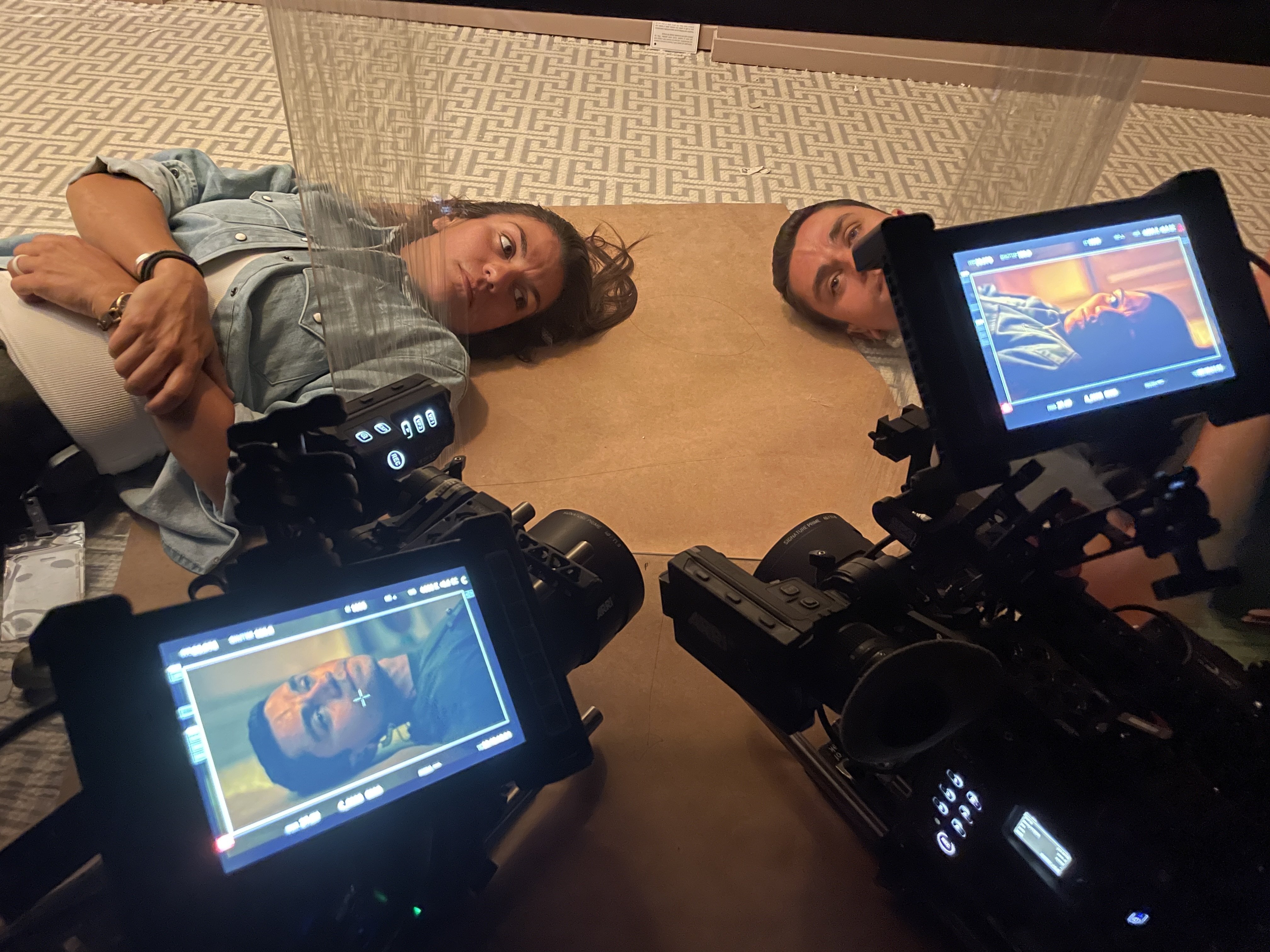
Lighting for the main scene was accomplished with a very soft toplight — hanging a heavy Grid Cloth ballooned out from the wall with two Astera Titan tubes and a "sock" around them. This type of lighting also allowed for conventional cross-coverage fairly easily, with the cameras just seeing over each actor's shoulder. The very soft light was forgiving, provided enough soft eye light and created the right mood.
Now for the beamsplitter set up. We had to temporarily construct a new "set" — two partial mattresses set at a 90-degree angle, on the floor, inside the bedroom set. Soft toplight was achieved through ceiling bounce, then through our same Grid Cloth. A small Astera Tube was rigged with a snow blanket above the mirror, but proved unnecessary.
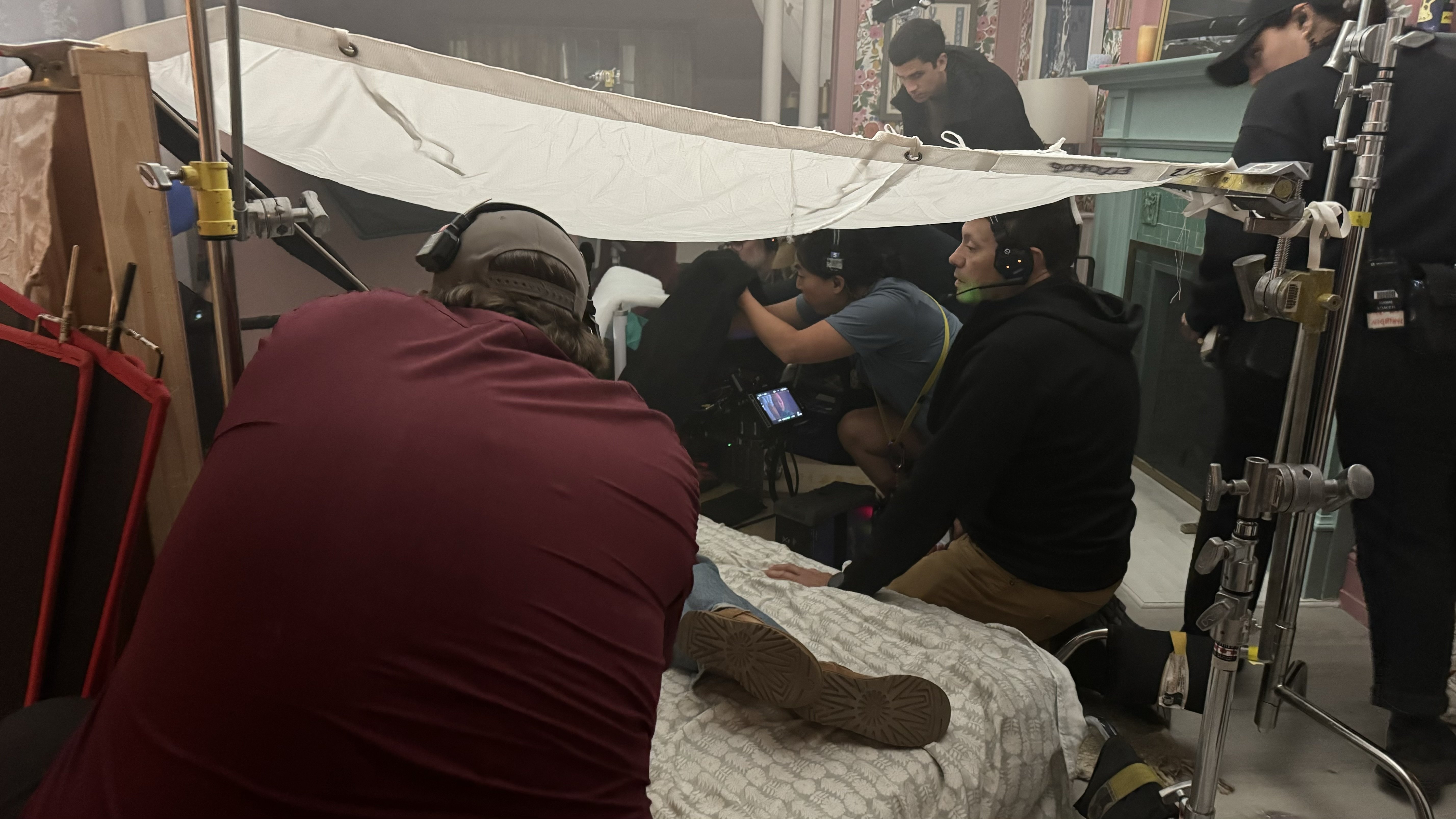
I have approached actors with several seemingly ridiculous requests in my quest to keep up our make-believe world... it's all part of the magic. This set, however, ended up looking, from the outside, a bit like that of a fort made of cushions and bedsheets by an eight-year-old. It was quite hilarious. After Nicole approved my attempt at this concept, I pitched it directly to Julianne and Milly, but I’m not sure they imagined crawling on hands and knees into this nest of sheets, mirrors and cameras! They were incredibly accommodating, and once inside, they looked like they were in the real bed and set — and the scene they performed is wonderfully creepy, effective and unnerving.

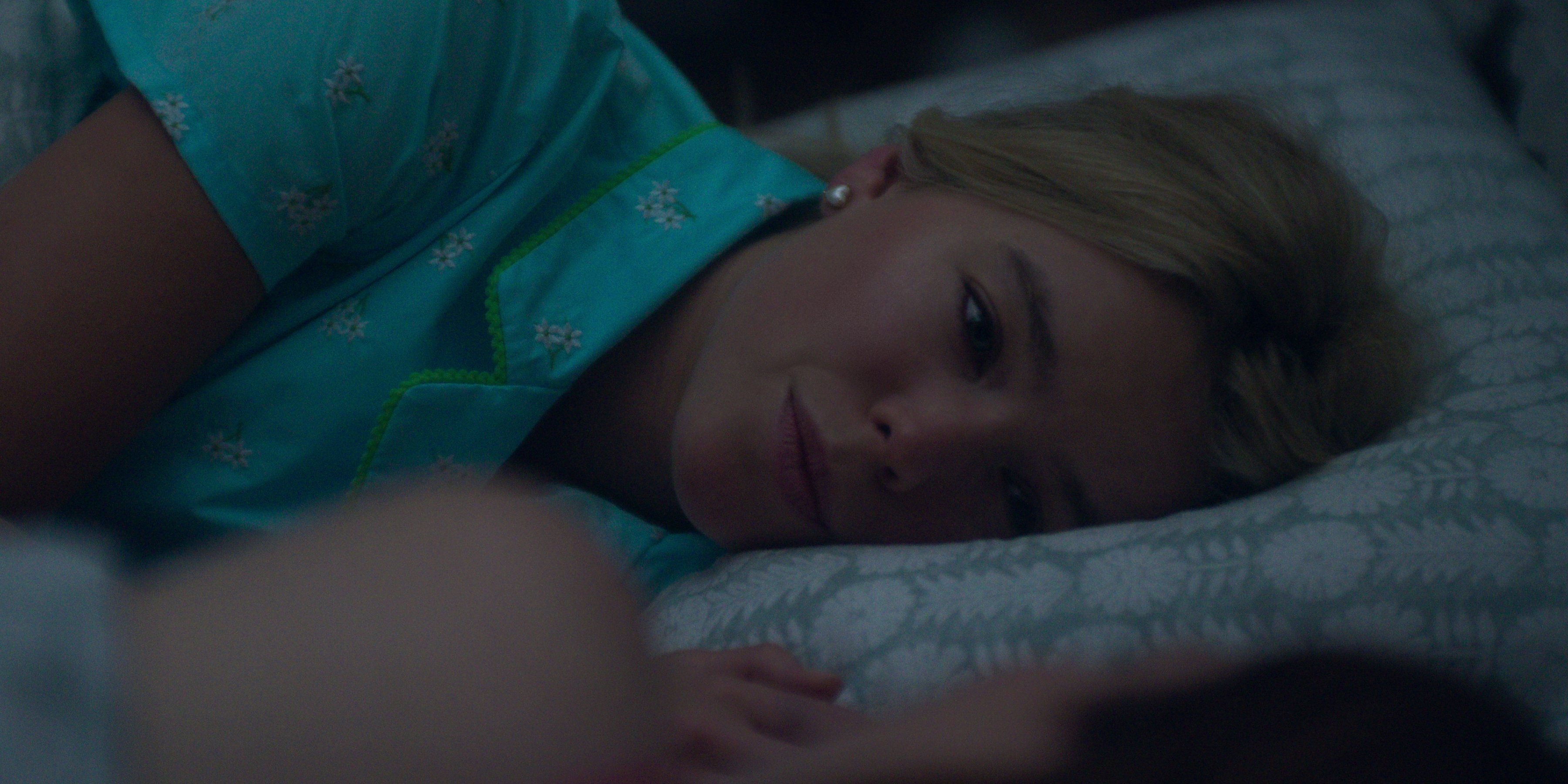
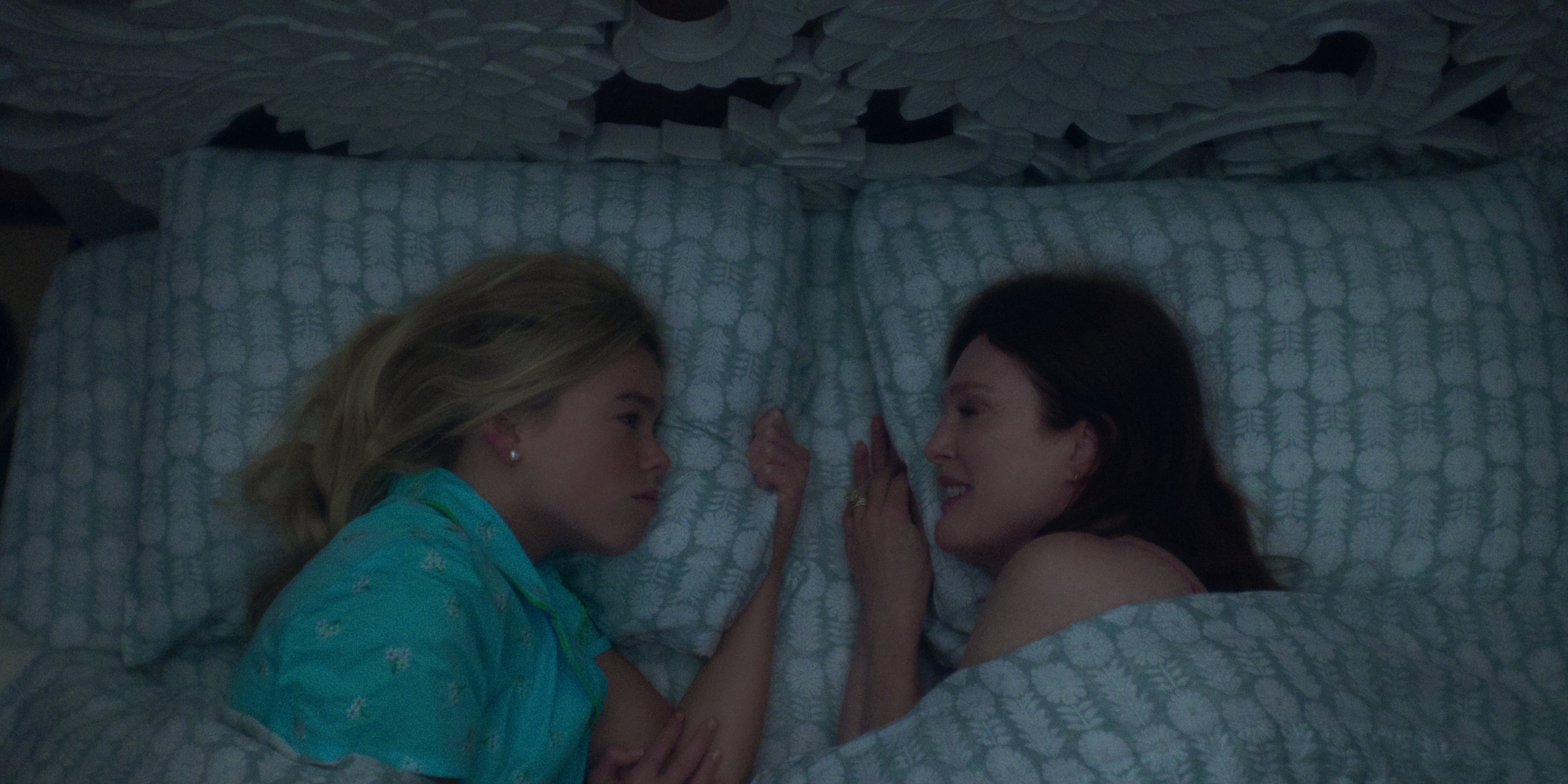


Some ideas seem a bit crazy, but it's always worth bringing them to the table to discuss. Collaborating with filmmakers like Nicole and my enthusiastic, passionate, hardworking crew made this unusual idea a reality. It is a team sport, after all.
Season 1 of Sirens is now available to stream on Netflix. All images courtesy of Netflix.






